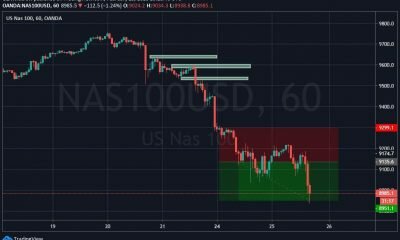In the past few months at least four crypto hedge funds have shuttered. Yet, there’s never been a better time for institutions to get involved in this sector.
Despite an unprecedented global pandemic wreaking havoc on just about every major economy on the planet, investors have made quite a lot of money in recent months in both traditional and crypto markets. When it comes to the latter, this is just the beginning for those with the discipline to seek out under-appreciated opportunities in this fast-paced industry.
The incoming bull market for crypto will look completely different than the last one. Mostly because there won’t be just one, but two different bull markets simultaneously playing out over the next 12-18 months.
One will involve the rotation of capital from zombie projects to protocols where the underlying product is actually being used and accruing value. Even without an influx of new capital or users, there is still too much money tied up in ghost protocols, many of which dominate today’s large-cap names.
After the last bull market, we were left with many projects with no real usage other than speculation. They were focused more on marketing efforts than actual product development.
Take XRP, for example. It is the king of worthless altcoins due to its ability to accrue very little to no value, even if adoption skyrockets. Even after the mid-March carnage, it still held a total market value north of $6 billion and currently trades close to $13 billion. Stellar’s native asset (XLM) is still in the top 15 at nearly $2 billion. NEO, another celebrated project in the ICO bull run that has yet to deliver, has a market cap of $1 billion.
There’s an important difference between the adoption – or “success” – of a certain protocol and the potential for value to accrue to its native token. But as I’ve written before, the reallocation of capital away from zombie protocols has already begun.
The “crypto tourists” of the last bull market have been driven out by inactivity, while the initial coin offerings and token projects they threw money at are shuttering. Decentralized finance (DeFi) is outshining alts, and investors now demand properly designed systems that actually contribute to the broader crypto ecosystem.
The speed at which these projects innovate and adapt to new market conditions makes them extremely dynamic. They show the advantage of open source development versus more traditional top-down methods. Square have an incredible team that’s been doing great work on all fronts (e.g., Cash App and Square Terminals).
The second bull market will be led by the usual suspect, bitcoin. As policymakers around the world continue to provide pandemic-related economic relief, bitcoin’s long-term value proposition as a hedge against fiat currency debasement only grows stronger. Circumstances are converging to accelerate us towards precisely the kind of world crypto was designed for.
In the short run, non-sovereign scarce assets (i.e. BTC and gold) could be challenged by increased deflationary pressures. But such conditions would undoubtedly force policymakers to provide even greater monetary relief, compounding our conviction in bitcoin’s long-term value proposition as a hedge against fiat currency debasement.
It’s easy in hindsight to say the investments made in the last period of market exuberance were doomed to failure, but there has been a shift in the standards of the industry.
The foundation for the base infrastructure of the decentralized economy is being laid as we speak. The composability between projects allow teams to iterate much faster than traditional software companies and opens up experimentation going forward.
..iCoQuet..








